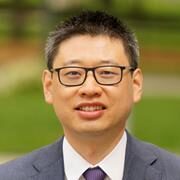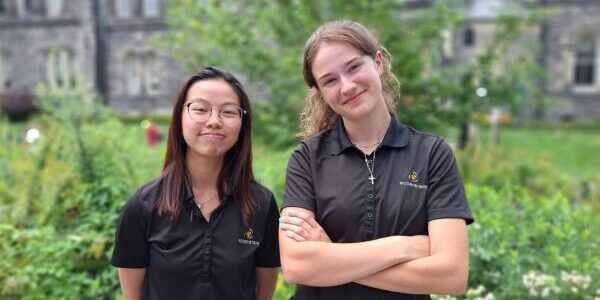When Madhi Ramesh (MSE MEng 2T5) moved to Toronto from India in 2023, she had no previous connections to the city. It wasn’t her first time starting over from scratch.
“My dad worked in construction; his company designed and built power plants, blast furnaces, mining installations and things like that,” she says.
“So I was always around engineers, but it also meant that we moved around India constantly, following wherever my dad’s work took him. By the time I graduated from grade 12, I had been to ten different schools. I would just have time to meet people and warm up, and then boom, on to the next place.”
Ramesh says that the constant moves were hard, but they also taught her creativity.
“I realized that I could become different versions of myself in each different place,” she says.
“If I were to stay in the same place, I would have had to be the same person throughout, fearing judgment if I changed something. But the constant movement let me absorb interesting character traits, make little upgrades to my personality, and explore who I could become.
“So, when the opportunity came to come to Canada, it felt like a natural continuation of that journey where I could continue to push my boundaries ”
Ramesh completed her undergraduate degree at Anna University’s College of Engineering, Guindy, in Chennai, and says she initially considered becoming a doctor before enrolling in materials science and engineering.
“I was good at biology, and good at memorizing stuff, but then I realized I’m not great with anything related to blood,” she says.
“Materials science for me is a bit like biology for non-living things. I saw through my dad’s work the role that material properties play in large-scale infrastructure projects, but at the same time, how often they get overlooked. It felt like a place I could make a difference.”
At U of T Engineering, Ramesh’s MEng project focused on additive manufacturing, a technology similar to 3D printing, but for metals. Working with Professor Yu Zou (MSE), she developed high-throughput methods to test large numbers of different metal alloys for their applicability to aerospace applications.
“The technology I used is called directed energy deposition (DED), and it uses lasers to melt together powders made of different materials,” says Ramesh.
“If we were doing this the conventional way mixing powders by hand, sintering, polishing, it would easily take months just to get through a single round of samples. There’s even a study that estimates it would take about 20 years to test 1000 alloys using traditional methods.
“But with the high-throughput approach we combine machine learning with the DED system and were able to print over 160 single-track samples and narrow those down to 27 bulk samples. With proper access to equipment, which can sometimes be tightly booked, testing all of those can be done in just a couple of days.”
In addition to her studies, Ramesh held down several part-time jobs during her time at U of T. One of them was with Tech2U, which offers real-time, personalized technical support for U of T instructors by a trained team of students and experienced technicians.
“The community there was just so great; we would hang out after the shifts were done, and talk about events and resources around campus and our experiences both at school and as students from different backgrounds,” says Ramesh.
“I also made a lot of connections by becoming the vice-president of the MSE graduate student association. We ran the most events in an academic year of any department.
“It was all about giving grad students a reason good enough to leave the lab, and to offer each other support. Being part of that group made me feel less like a scared international student and more like I belonged.”
Another way that Ramesh built community was to leverage her skills as a photographer, taking pictures at events for Tech2U, the MSE graduate student association and even collaborating with fellow photographers for Grad Ball, organized by the Graduate Engineering Council of Students (GECos).
“I got my first camera when I was still in undergrad, which at the time was the most expensive thing that I owned,” says Ramesh
“I quickly learned that when you have a camera in your hand, people open up more easily. And it’s a bit like meditation: you fade into the background and the story becomes about the person in front of the lens.”
As she approaches graduation, Ramesh is still not sure what will come next. She has made some connections in the nuclear industry, but she remains interested in aerospace and manufacturing as well. She says that one of the biggest lessons from her time at U of T Engineering is resilience.
“I did not know I could push so hard,” she says.
“Even on the days that I did not want to push, I was motivated by this strong desire to get better at doing things that I knew would lead to better outcomes for my project.
“I also got better at managing my time, at making a schedule and blocking time out intentionally. That way, when something derails, I know I have space to recover — and still get back on track. I think that’s a very important lesson that I learned.”





